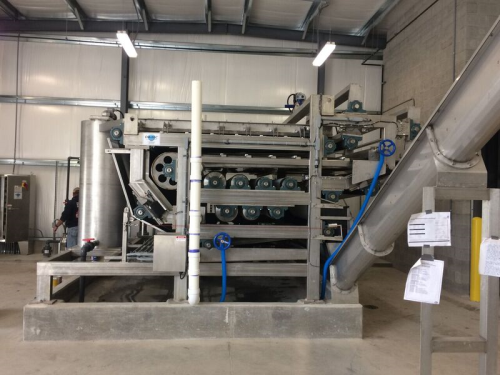
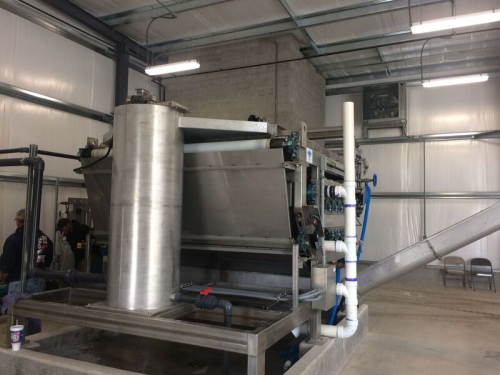
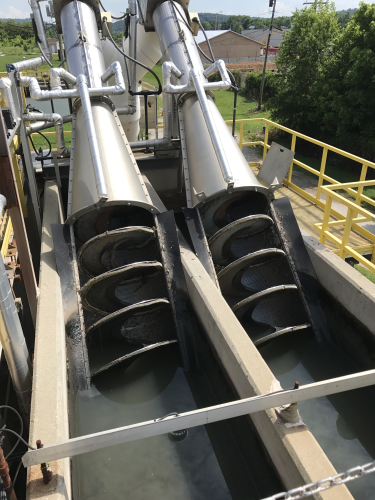
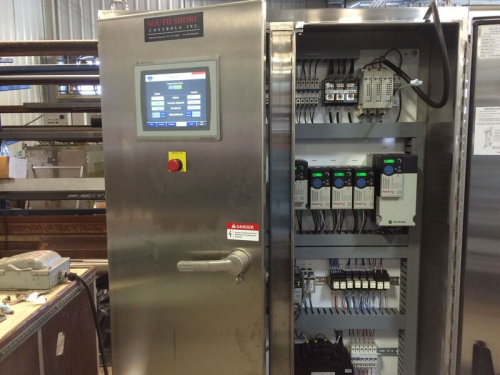
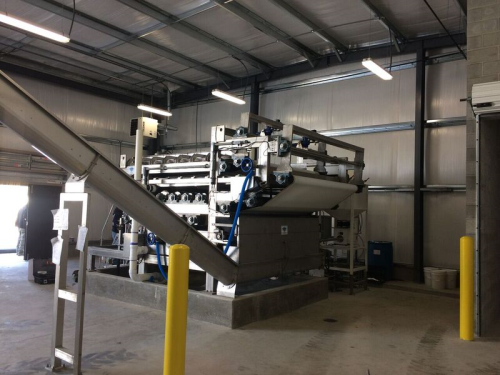
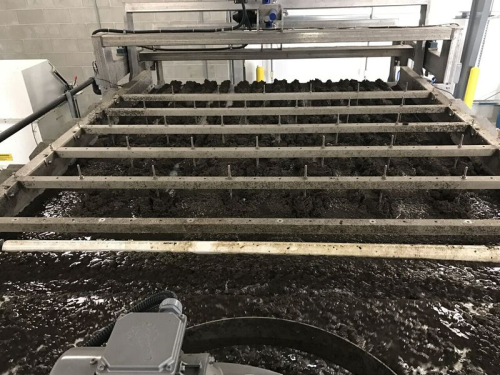
Given today’s demanding wastewater treatment regulatory landscape, the proper handling of sludge is a very important component of the design and operation of any size of wastewater treatment plant (WWTP) municipality. The ultimate mission of any such plant is to separate solids from water, and to disinfect both to different degrees by removing organic and inorganic contaminants, which may be hazardous or toxic to humans or have detrimental effects on the environment. Therefore, a key element in the wastewater treatment process is the Belt Press, which is used to dewater the sludge and change it from a liquid to a solid. In a progressive effort to adhere to West Virginia’s recently stringent uniform water treatment regulations regarding land application of treated bio solids, West Virginia’s City of Nitro Waste Treatment Plant (NWTP) sought out a superior solution to their existing Belt Press. The antiquated system was not performing at optimal levels, didn’t have the capacity to handle their sludge loading, and required excessive system maintenance. Located between two of the Mountain State’s largest cities of Huntington and Charleston, Nitro was originally born as a "Boom Town" during America’s mobilization for World War I for the production of gun powder. Now celebrating a centennial in 2017, NWTP is nestled near a coal burning power plant and services approximately 4,500 customers within the regions’ 7,178 population. Having researched Belt Press system options via visiting a number of different installations for nearly three years, Danny Lewis, NWTP’s Plant Superintendent, discovered a Belt Press system in operation at a wastewater treatment plant in Williamstown, WV. The plant’s superintendent, Bob Stirling, noted that it was a Gemini Belt Press from OR-TEC, Inc. (Maple Heights, OH). With previous experience using OR-TEC’s Screw Screens successfully for a number of years at the inlet of their plant to remove non organic debris (plastics, rags, sticks etc.), Lewis invited OR-TEC to bid on their new system. Matching the specifications from the Williamstown plant operation, OR-TEC provided Lewis with a detailed engineered specification proposal. At 2.2 metres wide, the Gemini Series Belt Press is the largest made by OR-TEC and is ideal for the medium to large size WWTP. The double belt system is constructed of stainless steel as it is far better material in wet/corrosive environments. This press combines a gravity drainage zone, a squeezing zone, and high pressure shear zone to provide a large dry solids throughput of up to 1,500 lbs. per hour, low polymer usage, high solids capture rate, and an excellent final cake.
The unit has a large flocculation tank with a variable speed mixer which allows the sludge and polymer solution to be thoroughly mixed. This flocculation process is critical to the dewatering process as it helps to separate the water and the sludge; the sludge then forms into small popcorn size balls in the water. The variable speed mixer allows operators to easily change the mixing energy which helps ensure the best possible flocculation. Following the flocculation tank, the sludge enters a large gravity zone where plows and dewatering rollers begin the process of thickening the sludge. From here, the thickened sludge enters a low pressure zone which features a large perforated stainless steel roller followed by an increasing pressure wedge zone. The final dewatering zone is a high pressure area where multiple rollers of decreasing diameter continue to squeeze and dewater the sludge.
A single control panel is used for all this equipment, and the Belt Press system also features electric actuation so no hydraulics or pneumatics are needed. These electrically actuated belt tracking and tensioning systems are controlled by the onboard programmable logic controllers (PLC’s) in the Belt Press panel. Ultimately, this means there’s no need to have a separate pneumatic or hydraulic system to operate and maintain tracking and tensioning of the belts. OR-TEC advised and supplied all aspects of Nitro’s system, adding value via working out all of the kinks at every stage of implementation. Some of these variables included trouble-shooting wiring of the control panel on the wall, upgrading to the recommended stainless steel at no additional cost, and providing conveyers that would typically need to be sourced out. These value-added benefits are particularly important for a smaller plant as no installation or maintenance crews are required.
The result
Delivered in September 2016, Nitro’s new Belt Press system has now been in operation for months and running at advanced capacity and performance. According to NWTP’s Danny Lewis, “The system handles a lot of throughput, so there is substantially less for operators to deal with on a daily basis. There’s no oil, filters, or air supply needed so it’s more user friendly, easier to operate, and maintain.”





